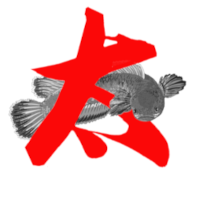Everyone in the aquarium hobby has their favorites. Fish that they have a special affection for based on either color, shape, behavior or other traits that endear that species to you. My favorites are Siamese tiger fish (Datnioides); African butterfly fish (Pantodon buchholzi); spotted climbing perches (Ctenopoma acutirostre), African leaf fish (Polycentropsis abbreviata) and paradise fish (macropodus) and Siamese betta fish (betta). There are many predator fish available in the aquarium trade, but it is hard to match the intensity displayed by a young tiger fish as it stocks prey. Similar intensity and concentration are shown when climbing perches or leaf fish stock prey. These mimic helicopters in the water maneuvering for a clean strike on an unsuspecting minnow. Then you can watch the fluidity and grace of a butterfly fish as it patrols the surface of the tank. These relations to arowana fish have an elegance that adds peace to any planted tank. While I have kept and spawned many of these fish, my favorites are paradise and betta fish. These insectivores have the awareness of predators and individual personalities that will interact with you when they are familiar and comfortable in their environment.
Paradise fish are a very common and under-rated ornamental fish. While this fish has touted as one of the original aquarium kept species, there seems to be relatively little development work done on color morphs and body style traits when compared to betta species. Yet paradise fish possess several positive traits that make them well suited for aquarium and pond placement.
- They have a nice size reaching between 10 and 15 cm. In length.
- They are very hardy fish that can tolerate wide swings in water parameters, water quality and temperatures
- They are anabantids (surface breathers) which allows them to thrive in low oxygen environments.
- They are insectivores that are able to survive on naturally occurring water borne organisms or eat mosquito or other flying insects that enter pond
- They have a genetically diverse color palette that can be developed through breeding to produce fish with varying color appearances and luminescence.
- They have very appealing fin shapes and morphs similar to bettas that display well in both aquarium and pond settings.
I tried not to make this a typical species site listing known facts about the fish and general knowledge regarding its keeping and mating. This site does contain some general info, but it is mostly a gathering of techniques and practices for keeping and breeding these fish with the goal to develop specific traits from the genetics. Shape, color, behavior, carriage – I breed these macropodus fish to develop the traits that I want in a pond fish.
For the last several years I have slowly developed a breeding protocol for paradise fish focusing on producing a strain or line of fish with vigor and vitality, clean body lines, radiant color and health and hardiness. Just to clarify, I am not referring to just producing spawns from random fish. I, as most serious breeders that are interested in developing a distinct line of a genus do, select fish with the traits I want to enhance and blend them into a breeding pot to draw out the specific trait in the final blood line. Yes, my fish are hybridized. While some associate that with negative purposes, I believe if you put a male and a female together and they produce strong off-spring that will breed themselves, then there is nothing unnatural about it. After all, if not all animals are hybridized due to location restriction, environmental influence or other. So if you put them together and they breed and those young are healthy, strong and can also breed, then no harm done. I also believe that it is rather sad that some parts of the world view the combining of superior genes in an hybridized animal as something negative when actually this animal is a stronger, improved version of existing.
So if you are not in objection to this philosophy and are interested in some of the techniques and tricks I use to develop my macropodus line, please read on.

